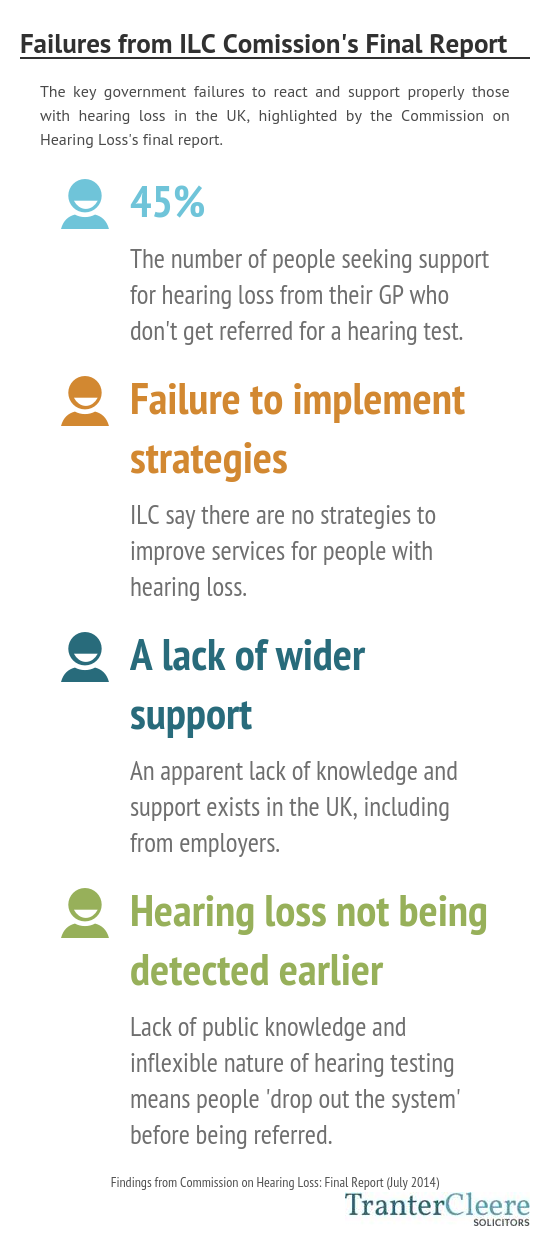Hearing loss affects millions of people throughout the UK, and regardless of age there’s a chance that working environments can have contributed to the condition. From construction and mining to manufacturing and agriculture, there are a number of industries that present a risk – and the rates don’t seem to be falling significantly.
Read on for our analysis of industrial deafness statistics in the UK, and whether you could be at risk.
How Many People Are Deaf In The UK?
Before drilling down into how workplaces and particular industries contribute to hearing loss in the UK, it’s worth looking at the bigger picture – just how many people do suffer from hearing loss?
The organisation Action on Hearing Loss (formerly the RNID) released its most recent statistics a few years ago, showing that currently 10.1 million people in the UK suffer from some form of hearing loss. This can be split down into four types: mild, moderate and severe hearing loss, and profound deafness being the most serious.
One way this is measured is by determining the quietest sound (in decibels) which can be heard; 95db is the average quietest sound a profoundly deaf person can hear, compared with the average 0db to 10db, and lows of -15db for someone with very good hearing.
Key Points:
- 8% of people with hearing loss are severely or profoundly deaf.
- Almost 65% of all cases are in those over 65.
- 3.7 million people of working age are affected by hearing loss.
- Over 135,000 people of working age are severely or profoundly deaf.
As part of their report, Action on Hearing Loss also looked at projections for the following 20 years, all the way through to 2031. In it, they predict a rise of just over 40% in the number of people suffering with some form of hearing loss taking the total up to 14.5 million people.
They say the reasons for this will chiefly include an ageing population – a group which, particularly if previously exposed to high levels of noise, is most at risk of damage to the cochlea.
Key Points:
- Hearing loss cases expected to rise by around 40% over ten years.
- Mainly expected due to increase in ageing population (over 65s).
- Also due to long developing nature of damage to hearing.
- By 2030, adult hearing loss is expected to be in the top 10 ‘disease burdens’.
Hearing Loss At Work – Who’s Affected?
Firstly, we need to look at the bigger picture and see just how many cases of industrial deafness (also known as noise-induced hearing loss, or NIHL) there are in the UK. Figures over the last ten years seem to show a pattern of cases rising and falling again over a 3-5 year period. However, over the full ten years shown above, cases have fallen – despite a rise in last year’s figures.
Key Points:
- Number of cases seems to be rising in the last 4-5 years.
- Long-term cases are fewer than 10 years ago.
- New cases are also declining – less than half of 10 years ago.
- Pattern seems to show rises and falls every 3-4 years.
- No real changes in the last 10 years.
The graph above breaks down the most recent figures of new cases (which is measured as new claims to the Industrial Injuries Disablement Benefit scheme), and looks at which specific industrial sectors contribute the most.
A consistent pattern exists in that manufacturing (e.g. factory work), utility supply and construction work have the highest rates of new industrial deafness cases – 4.1, 1.4 and 1.9 cases per 100,000 employees respectively.
The good news, though, is that new cases are on the decline – from almost 350 in 2003 down to an all-time low of just 120 in 2013.
Key Points:
- Manufacturing and construction remain the industries with the most new annual cases.
- The ‘Application outside Great Britain‘ order to the HSWA 1974 seems to have eliminated new cases in offshore industries.
- Overall annual average is still relatively low; specific industries are where the risks are.
- New cases of NIHL have more than halved in the last ten years.
Government Reactions & Deaf Support
There are a number of outcomes from the International Longevity Centre’s commission on hearing loss report, which you can download here. As well as a number of positive observations, including the falling rate in incidents and new cases, the report highlighted a number of concerns and criticisms.

It’s worth noting that the commission did also offer recommendations for each of these areas, with the aim of improving the overall care and support offered to those suffering with any kinds of hearing loss. You can read their summer in the link above, or their recommendations in detail in the downloadable report itself.
Are you affected by noise-induced hearing loss as a result of your workplace? If so, and you believe that your employer could have been at fault, you could make a claim. Visit our industrial deafness page for more details, or call 0800 6 12 11 13 to start your claim.